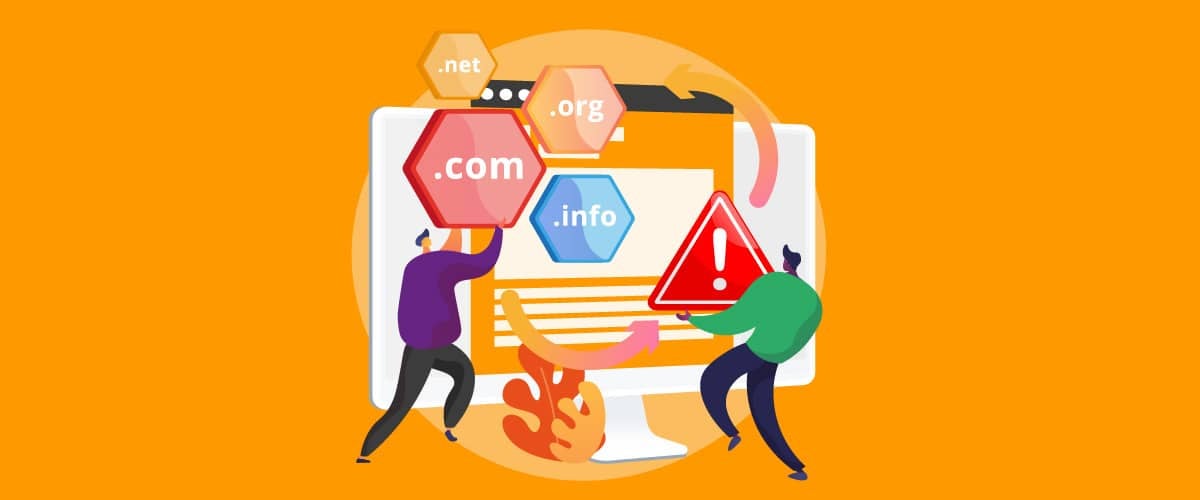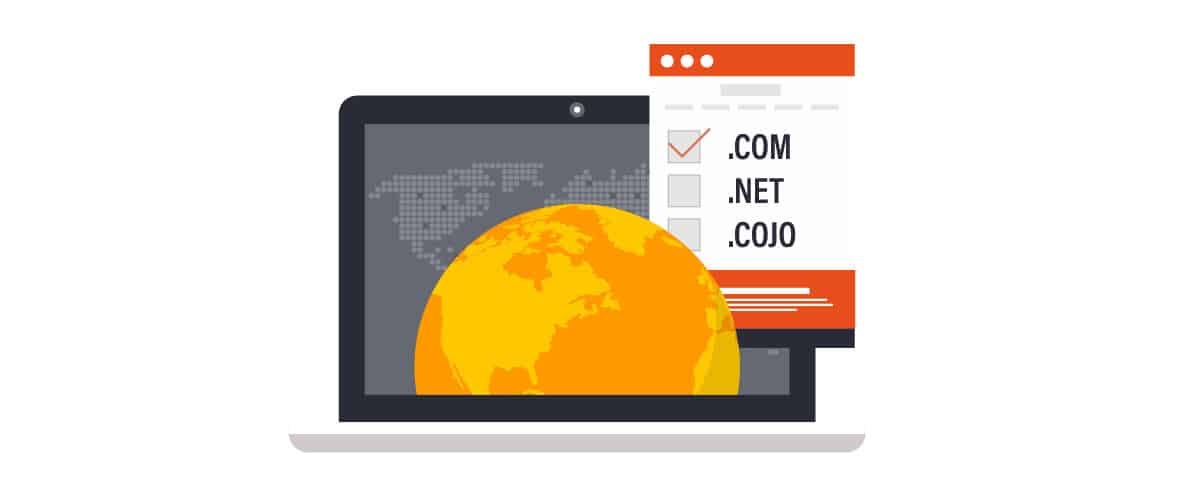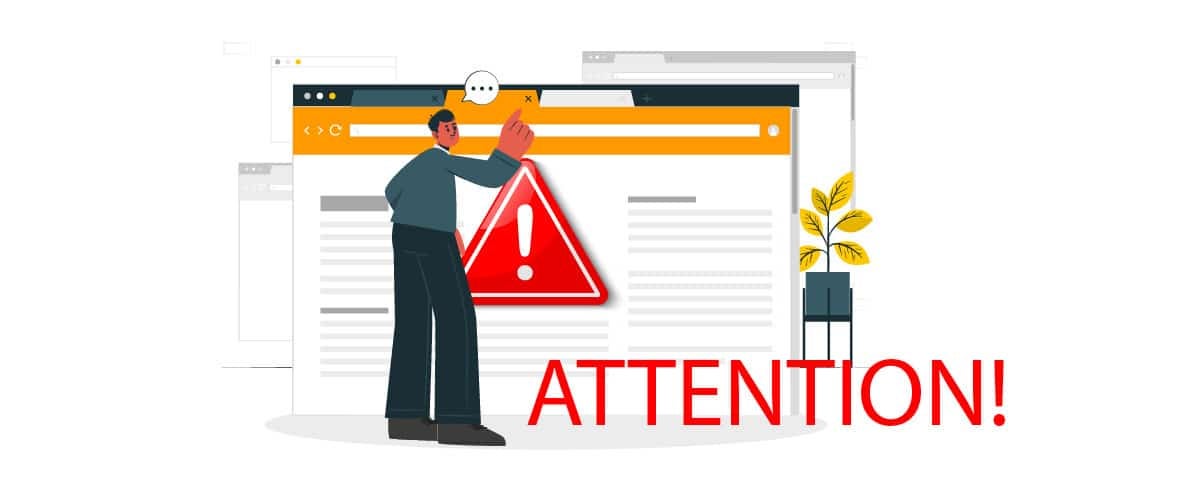
How to block top-level domains (TLD’s)
Blocking TLD’s helps you to avoid becoming a victim to a cyber attack. In this post we will explain how to block dangerous top-level domains and the specific functions of FlashStart such as the DNS filter for blocking undesired sites and guaranteeing a safe navigation.
1. Top-level domains: what are they?
In the computer world sector top-level domains (TLD’s) correspond to the last part of a sites URL. More precisely, we are talking about the alphanumeric formation that can be found on the right hand side of the domain name of a site. For example, in the address https://flashstart.com the top-level domain is “com”.
Some domains are already well known, for example “org”, “gov” or “edu”. All domains are catalogued according to their classification by the Internet Assigned Numbers Authority (IANA), the authority that looks after the distribution of IP’s on a local level. This classification includes the following two types of top-level domains:
» National top-level domains (country code top-level domains): these are two letter domains that are usually used by the state and their dependency territories. They therefore have a geographical valence. There are the examples of “it” for Italian ones or “eu” for European Union ones.
» Generic top-level domains: these are three or more letter ‘speaking’ domains, ones that should give you an idea of the subject category that they use. For example, “edu” makes you think of an educational sector and should be used for things that have something to do with such whilst “com” should be reserved for activities of a commercial nature.
There are also other types of top-level domains, such as restricted generic domains, of which the IANA website cites three (biz, name and pro) and, finally, there are two specialised domains. These are “int”, dedicated to international organizations and the domain “arpa” (Address and Routing Parameter Area) that is used just for internet structures.
>> Do you know how to block dangerous top-level domains? FlashStart can protect you from a vast gamma of threats and block the access to harmful sites ? Request a quotation or try it now
2. Top-level domains: why block them?
Up until 2012 there were only six generic top-level domains: com, edu, org, net, gov and mil. From 2012 onwards, with the liberation of TLD’s, it has been possible for almost anybody to register a top-level domain. Seeing as hackers are always up to date, they have welcomed this change as a valid occasion for creating ever more dangerous instruments of sure impact, using top-level domains, similar to official ones, creating specific ones for malicious intent.
However, blocking TLD’s is not just for avoiding malicious attacks. The objective can also be that of blocking undesired sites: many TLD’s, in fact, are used almost exclusively for distributing spam and publicity. We shall talk about blocking undesirable sites in the last part of this post.
2.1 What are the most dangerous top-level domains?
So, blocking TLD’s is useful, but which are the domains that should be blocked? The list is in continual change according to what the domains are being used for. The Spamhouse Project constantly updates its list of the most abusive 10 top-level domains in the world. The list, available here, includes, in its top three, “surf”, “link” and “ml”.
For “surf”, considered the worst, Spamhouse reports 808 visible sites, of which 708 are considered ‘harmful’ (with an 87.6% incidence rate). For “link”, that is second on the list, the site reports 19.932 sites of which 10.142 are considered ‘harmful’ (with an incidence drop of 50.9%).
Seeing the pervasiveness of the problem it is natural to ask how to block top-level domains, FlashStart can give you the answer.
>> Uncover how to block dangerous top-level domains with FlashStart, the DNS web filter against malware and undesired content ? Request a quotation or try it now
3. FlashStart blocks dangerous top-level domains
FlashStart proposes a DNS based web filter that automatically blocks dangerous TLD’s and allows you to block undesired sites, guaranteeing a secure navigation even in todays context where internet threats are in continual change.
The web filter from FlashStart is totally cloud based and doesn’t require any acquisition of hardware, with consequent savings on maintenance and update levels. The instrument that is proposed by FlashStart can be installed at router level, guaranteeing the coverage of all devices connected to the network, or at an endpoint level through the application ClientShield, to assure the protection also of any devices that find themselves outside of the company network.
Plus, being supported by the cloud means that the end user can enjoy updated protection without the need of downloading any kind of update or having to do long system re-starts. The cloud, in fact, transposes all of the recent additions and modifications and makes them instantly available to all devices that are protected by the FlashStart web filter against malware and dangerous content.
3.1 FlashStart: DNS Intelligence for blocking TLD’s
The web filter from FlashStart is based on DNS Intelligence. Just as any kind of intelligence, the objective of DNS Intelligence is that of collecting data which is then analysed for making decisions and choices on an ‘informed’ level, therefore considering all of the available information that can be analysed.
In the computer science security sector, DNS Intelligence is thus the procedure that allows you to choose whether or not to resolve a domain, therefore allowing the user to access or be blocked for security reasons. To collect the necessary data in order to make the right choice the DNS Intelligence monitors the online activity of the domain, this enables it to understand if there are any malicious intentions or even if it is a site with only good intentions.
FlashStart constantly scans the internet in an effort to understand which domains are trustworthy and which are not. Once the decision has been made, the domains that are considered to be dangerous are added to contents that have to be blocked, or blacklist, that is present on the FlashStart cloud. The cloud also automatically includes the dangerous top-level domains that, as such, need to be blocked.
>> FlashStart is totally cloud based and automatically blocks dangerous and malicious top-level domains ? Request a quotation or try it now
3.2 How to block top-level domains? This is how FlashStart works
But how does the FlashStart filter know which domains are dangerous and which ones are not? FlashStart uses complex algorithms of Artificial Intelligence that are based on neural networks for imitating and boosting up the processes of the human mind such as reasoning and understanding. Thanks to the Artificial Intelligence FlashStart can analyse up to 200 thousand new sites every single day, on any top-level domain, and, where necessary, add them to its cloud blacklist.
Thanks to Machine Learning, as well, FlashStart algorithms learn from their past experiences and allow the system to build on precedent analyses and identify in a more agile way dangerous and malicious sites. In this way, blocking TLD’s associated with controversial sources becomes more simple and more immediate.
4. FlashStart Geoblocking: how to block dangerous national top-level domains
As well as automatically blocking TLD’s that are associated with malware or dangerous content, FlashStart also allows the user to block TLD’s based on their geographical location. Better still, thanks to its Geoblocking function the network administrator can decide for themselves whether to block the access of sites that are physically based on servers that can be found in Countries that are deemed to be high risk on a computer science security point of view.
The FlashStart Geoblocking option allows you to be more relaxed when coming up against some of todays contexts, characterised by great uncertainty on an expectation level, and where the conflict between Russia and Ukraine is being fought, along with the more traditional battlefield weapons, on the cyber level.
>> Are you an appliance producer? It is possible to natively integrate FlashStart ? Request a quotation or try it now
5. Blocking TLD’s that are associated with undesirable content
Finally, FlashStart also allows you to block undesired sites. We are talking about content that is not exactly malicious but still needs to have access blocked for various reasons. Amongst these we will mention:
» The instigation of inappropriate acts that could lead to the exposition of violent content or even subjects tied to drug usage:
» The psychological effects of the exposition of some types of content, such as those of a sexual nature or even online bullying, above all in a scholastic or home context, learn more by reading this dedicated article:
» Things relating to decency in the workplace.
In all of these cases, FlashStart allows you to decide how to block undesired sites along with which content to block and for which users, leaving the network administrator lots of freedom to personalise their content filtering. To find out more click here.
>> With FlashStart you are guaranteed safe navigation against malware as well as being able to block undesired sites throughout your organization ? Request a quotation or try it now
You can activate the FlashStart® Cloud protection on any sort of Router and Firewall to secure desktop and mobile devices and IoT devices on local networks.









